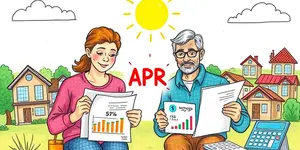
Amid economic uncertainty, borrowers and lenders increasingly consider loan extensions. This article dives deep into potential pitfalls and offers guidance for informed decision-making.
A loan extension occurs when the lender and borrower agree to lengthen the repayment horizon beyond the original maturity date. This practice aims to provide short-term cash flow relief by reducing periodic payments.
In recent years, financial institutions and consumers alike have embraced extensions. Commercial real estate has seen a rise in loan extensions, with nearly $384 billion of mortgages extended in 2025 alone. The so-called “extend-and-pretend” strategy involves repeatedly renegotiating terms to defer default, a trend that accelerated after market disruptions and rising interest rates.
Loan extensions date back decades, often used by municipalities and businesses to navigate financial stress during economic downturns. While they can stabilize cash flows, extensions may also delay necessary balance sheet adjustments, creating a cycle of temporary fixes rather than lasting solutions.
Different loan categories exhibit unique challenges when extended. It’s crucial for stakeholders to recognize these nuances to assess potential downsides effectively.
Auto loan extensions often stretch original five-year agreements into six- or seven-year plans. While this approach lowers monthly payments, it also triggers increased default risk. Statistical analyses reveal that default rates for six- and seven-year auto loans can be more than twice those observed for five-year contracts.
Consumers opting for extended terms are frequently credit and liquidity constrained. They may rely on longer schedules to afford higher-priced vehicles, only to find themselves underwater when their car’s market value falls faster than principal is paid down. The result can be negative equity and a heightened likelihood of repossession.
Industry data indicates that average auto loan debt per borrower has climbed to nearly $20,000 in recent years. Lenders capitalize on extended terms as a marketing tool, enticing buyers with lower initial monthly outlays. This tactic can obscure the true cost of financing and lead to buyer fatigue as cars age.
Extended auto loan agreements also hamper borrowers looking to trade or sell vehicles. Negative equity situations—where the loan balance exceeds the car’s market value—can trap owners in their current vehicles or force them to roll outstanding balances into new loans, further escalating long-term debt.
In the commercial real estate sector, extension risk—or balloon risk or extension risk—emerges when lenders allow borrowers to push out maturities. This deferral can be appealing during market downturns, preserving liquidity and avoiding distress sales.
Key factors influencing extension risk include property net operating income (NOI), stabilized debt coverage ratio, loan-to-value (LTV) thresholds, and prevailing interest rates. A drop in rental income or an increase in rates can leave borrowers unable to secure new financing when extensions expire. In fact, nearly 30% of maturing loans in 2024 required extensions to avoid default.
Consider a midsize office building in a secondary market: the owner negotiates a two-year extension to avoid selling at a steep discount. During that extension, vacancy rates climb and rental concessions increase. When maturity arrives, the borrower faces higher payments and no viable refinancing paths, exemplifying how extensions can compound rather than resolve stress.
Government regulations and capital reserve requirements for lenders have tightened, making banks more cautious about repeated extensions. Stricter oversight on commercial mortgage-backed securities (CMBS) pools has brought loan extension scrutiny into the spotlight, forcing lenders to weigh borrower credit quality against market stability.
Beyond auto and commercial loans, many borrowers consider extending mortgages, student loans, or home equity lines of credit. While lower payments can ease monthly budgets, the strategy often carries hidden costs.
Extending a mortgage from a 15-year to a 30-year schedule can slash payments in half, but it may more than double the interest paid over the life of the loan. Similarly, stretching student loan repayment from a standard ten-year plan to twenty or twenty-five years provides immediate budget relief while significantly increasing total interest obligations.
Homeowners tapping equity lines may extend their draw period or repayment schedule. Such moves can defer principal payments, but risk leaving borrowers with large balances at the end of the draw period. HELOC extensions often carry variable rates, adding unpredictability to future payments.
In every scenario, lenders benefit from prolonged interest income, whereas borrowers may lose ground in wealth accumulation and equity growth. Recognizing this trade-off is key to evaluating the soundness of term extensions.
The core financial trade-off when extending loan terms involves balancing lower monthly outlays against the increase overall interest paid. Consider the following comparison:
In this scenario, the borrower reduces each month’s payment by $120 but pays an additional $5,500 in interest. That extra expense can represent thousands of dollars diverted from savings, investments, or emergency funds.
Credit scores also feel the impact. Higher debt-to-income ratios and extended repayment schedules signal longer-term obligations to credit bureaus. As a result, borrowers could face reduced credit availability or higher rates when seeking new loans or credit cards. A prolonged debt repayment period challenges future borrowing potential and financial flexibility.
Additionally, inflation and opportunity cost play subtle roles. Money saved on payments today, if invested, could outpace the long-term interest burden, but this requires disciplined investing—a risk in itself.
Macro factors such as central bank rate policies directly affect extension feasibility. Rising interest rates increase refinancing costs, making extensions appear more attractive initially but potentially saddling borrowers with higher floats if rates climb further during the extended term.
Economic cycles introduce uncertainty. During recessions or market corrections, property values and borrower incomes often decrease simultaneously, triggering a double bind for those relying on extension strategies to avoid distress. This dynamic led many commercial borrowers to request extensions during the 2020 downturn, stressing lender balance sheets.
Regulatory measures, including stress testing for banks and capital adequacy requirements, have made lenders more cautious with extension approvals. Policies aimed at preventing systemic risk in housing and commercial markets may curtail the ability to extend in future cycles.
Borrowers and lenders can adopt proactive measures to manage the inherent risks of extending loan terms.
For Borrowers:
For Lenders:
Extending loan terms can temporarily ease financial pressures, but it often comes at the cost of higher lifetime interest payments, prolonged debt obligations, and potential credit score impacts. Across auto loans, commercial real estate, and general borrowing, understanding the nuances of extension risk is paramount for both borrowers and lenders.
By weighing short-term relief against long-term costs, engaging in disciplined planning, and leveraging alternative financing options, stakeholders can navigate the complex landscape of loan extensions more effectively. As interest rates fluctuate and regulatory frameworks evolve, anticipating future trends in loan extensions will be essential for maintaining financial resilience and seizing growth opportunities.
Informed decision-making, transparent communication, and robust risk management stand as the pillars of responsible lending and borrowing—ensuring that relief today does not become regret tomorrow.
References













